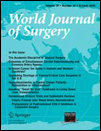Pancreaticojejunal Bridge-Anastomosis: A Novel Option for Surgeon to Preserve Pancreatic Body and Tail in Urgent Reoperation for Intra-abdominal Massive Hemorrhage after Pancreaticoduodenectomy
Abstract
Background
Postoperative intra-abdominal massive bleeding is a rare and life-threatening complication associated with pancreaticoduodenectomy. Completion pancreatectomy (CP) was usually performed during reexploration for the complication. The management could decrease the complications, such as the pancreatic leakage or intraluminal infection after reexploration, but could increase mortality during the perioperative period. It also could result in loss of pancreatic function forever. This study evaluated an alternative surgical management for intra-abdominal massive hemorrhage to prevent pancreas function, simplify the surgical processes, and decrease the mortality of relaparotomy.
Methods
Outcome after pancreaticojejunal bridge-anastomosis (PJBA) performed between January 2006 and June 2009 was compared with that after CP performed between February 1984 and December 2005.
Results
Between February 1984 and June 2009, 963 patients underwent the Whipple procedure (PD) or pylorus-preserving pancreaticoduodectomy (PPPD). Pancreatic leakage occurred in 103 patients (10.7%); 22 cases (21.4%) developed into intra-abdominal massive bleeding. Nonsurgical procedures of transarterial embolization (TAE) were performed in ten (45.45%) patients, of whom one died (10%). Twelve (54.55%) underwent reoperation. Five had CP with one death (20%). Pancreatic remnant was preserved by pancreaticojejunal bridge-anastomosis (PJBA) in seven patients with no deaths. The reexploration time was 340 ± 48.2 min vs. 247.9 ± 40.8 min (P < 0.01) for CP and PJBA group and the blood loss was 2,180 ± 526.3 ml vs. 1,628.6 ± 325.1 ml (P < 0.05). In-hospital time for CP was less than that for PJBA (P < 0.05). All patients with CP still developed endocrine insufficiency (“brittle” diabetes) and diarrhea (exocrine insufficiency). There were no evidences of exocrine and endocrine insufficiency in patients with PJBA.
Conclusions
Pancreaticojejunal bridge-anastomosis is an easy, simple, and safe procedure for intra-abdominal massive hemorrhage associated with pancreaticoduodenectomy. It could decrease the mortality of reoperation and preserve the pancreatic function.




